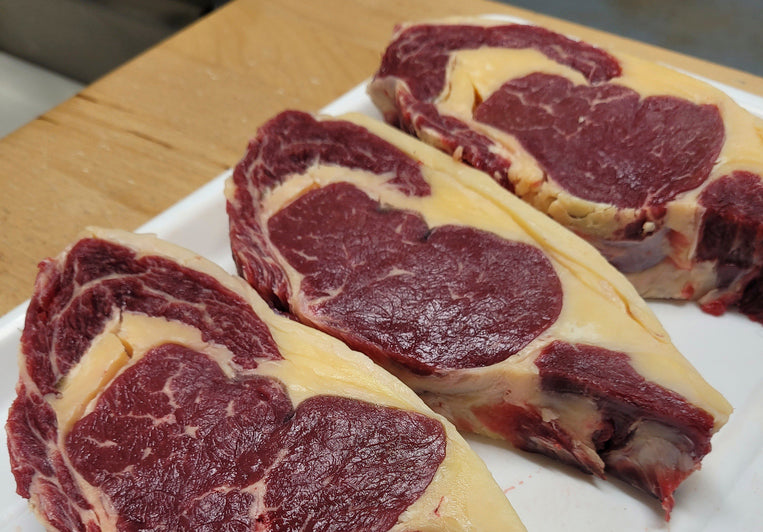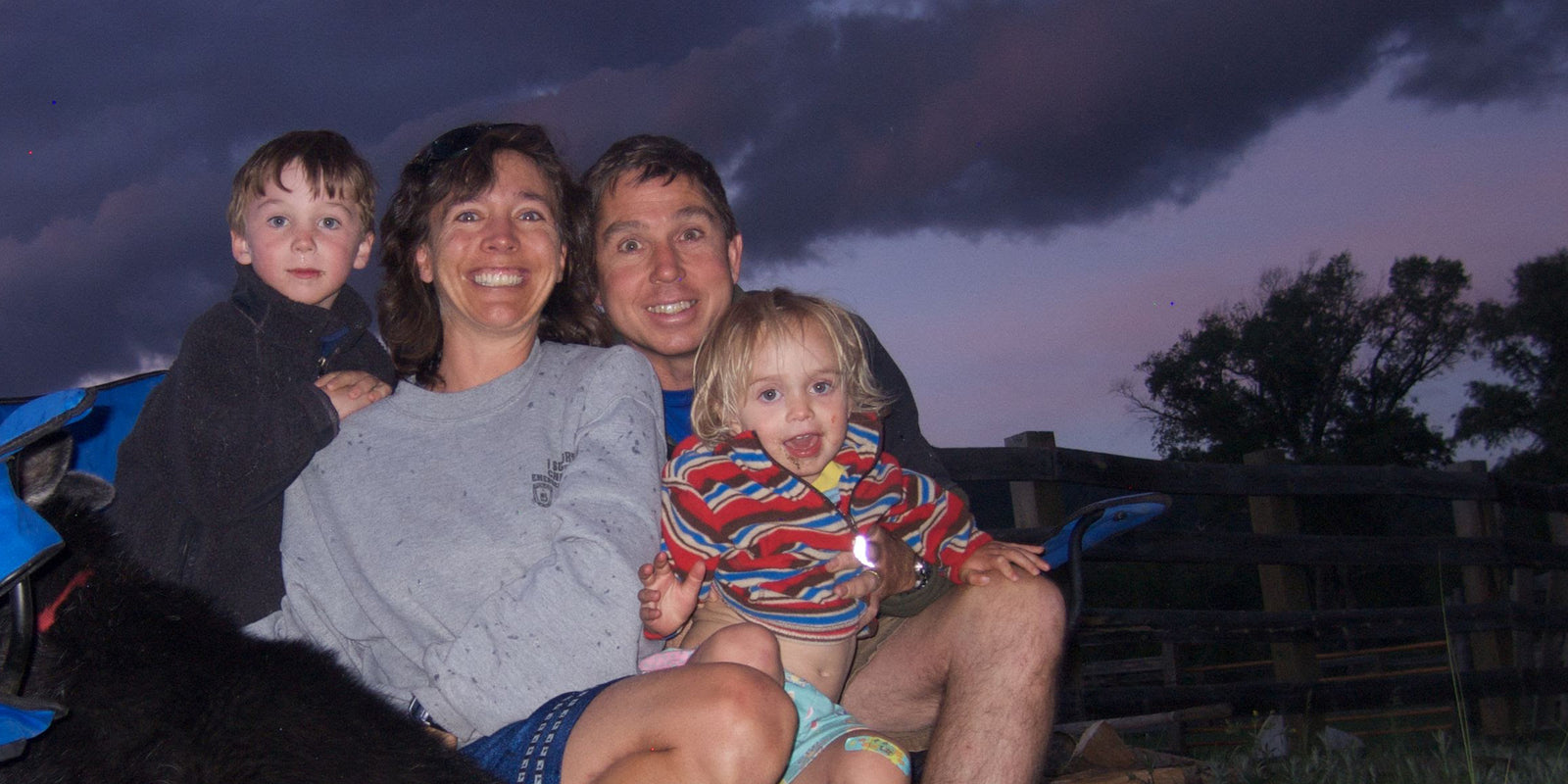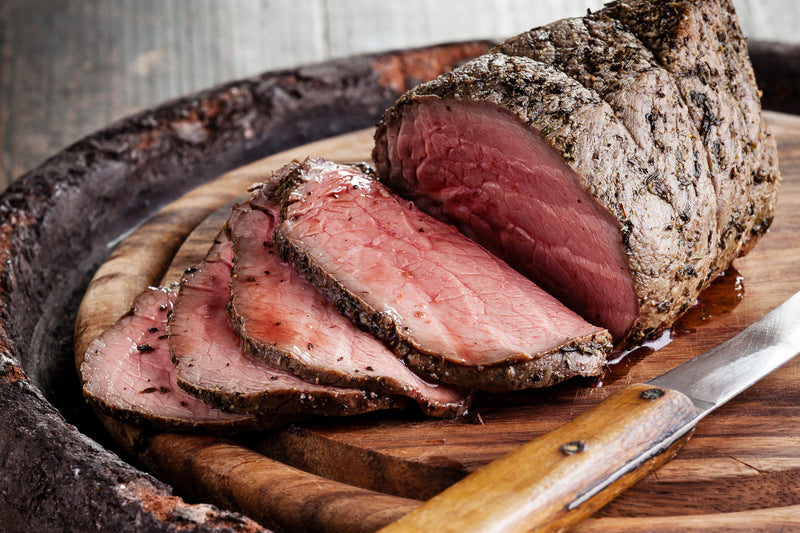Herding
The Symbiotic Relationship Between Grazing and Grass
Grazing and grass. Two great things that go great together. In fact, they need each other. Without grass there wouldn’t be any grazing animals. And without grazing there wouldn’t be any grass. The acts of eating the grass, urinating and defecating on the meadow, stomping the ground with sharp hooves – all of those are necessary for healthy grasslands.

Like everything, though, too much of a good thing - eating, peeing, pooping and stomping - is not good for grass. How much grazing is just right? And why do we care?
Our Solar Energy Farm
First, we care because grass (and other plants) are our solar energy collectors. Our animal grazing operation collects solar energy and transforms it into high-grade protein, which we sell to our customers as tender, flavorful meat. The more solar energy the plants collect, the better for everyone. We could put on our green eyeshades, geek out and make that grazing evaluation as sterile as we want. But really, anybody who has wandered over a healthy, thriving pasture can appreciate the goodness. Likewise, it doesn’t take training to viscerally notice unhealthy land which has been overgrazed year after year.
So, what is the Goldilocks amount of grazing? The amount that consistently maximizes the plant quantity and diversity? The best answer – allow animals to graze, but don’t let them graze on grass when it is growing.
No grazing when the grass is growing? How does that work?
Grass Growing Cycle
The desired growth cycle for grass is:

-
Energy in roots initiates growth of new grass shoots.
-
Grass absorbs sunlight, and other nutrients. Grass grows taller AND puts energy and nutrients into its roots (and the soil).
-
Grass is eaten by grazing animals AND/OR grasses use energy to produce seeds or new roots (rhizomes or stolons).
-
Repeat
Grazing animals prefer the fresh, new grass. Those soft, sweet, high-energy stems which are just emerging from the ground are so tender. Yum!
But, if the grazers continually eat the new shoots, the grass never advances to phase 2 of the cycle – absorbing sunlight and energy to replenish and nourish the roots. That is overgrazing. The root system weakens. That must be avoided. It's like overdrawing from an investment account. Sure we can extract a few more bites this year, but in the long term we won’t have good grass.

Another role for grazing animals is to eat old growth – the stems that have gone to seed, perhaps – and to tear up the old, dead grass (a process called dethatching) to make room for new growth. Although animals prefer the young, tender, plants, when the animals are bunched in a herd they will eat everything: the new shoots and the older, more fibrous, stems. (That is sometimes called “mob grazing”.)
Goldilocks Grazing
Goldilocks grazing happens when the herd is bunched tightly enough in an area that they eat everything and then move on to another area before regrowth starts so new grass can enter phase 2. In our mountain pastures, during peak summer growing season, that period is a week to 10 days of intensive grazing on an area before the grass enters phase 1 and starts regrowing.
After that period of intensive grazing the grass needs an ungrazed, rest, period. That is phases 1 & 2 of the cycle. The shoots emerge, grow large enough to absorb sunlight, grow taller, accumulate energy in the roots, and the root structure grows larger and deeper. In our mountain pastures, the rest period is about 4 – 6 weeks. After that, the grass can be grazed again.
This grass-grazer symbiotic relationship evolved with herds of wild animals moving across a region. Picture herds of bison roaming across the prairie, eating and tromping everthing in their path. Now that we have domestic livestock on private ranches we are responsible for mimicking the natural “intensive grazing” followed by “rest” cycle. We do that by herding the animals to graze on one particular area of our pasture for a week or 10 days, and then herding them to another area and letting the previous area rest for 4-6 weeks.
Omar – Human Herding Rather Than Electric Fencing
 Every morning on our Wolf Creek Ranch, up in the mountains, Omar has the job of pushing the animals into the current grazing area. After a week or 10 days, depending on growth, he switches to the next grazing area.
Every morning on our Wolf Creek Ranch, up in the mountains, Omar has the job of pushing the animals into the current grazing area. After a week or 10 days, depending on growth, he switches to the next grazing area.
In the mid-west, and on flat pastures without elk, the grazing management can be done with temporary electric fence. But up the in mountains the terrain is too irregular and the elk tear up temporary fence (and permanent fence, too). So we use the old-school method of a human herder – Omar.
That comes with many advantages. Omar checks on the animals every day. In the old West, cattle roamed free and were gathered perhaps as little as once a year. Well, that doesn’t work for us. Omar looks through our cattle and yaks every day, checking on their condition, looking for any problems. He also counts the animals. Fences get torn up by elk, and in the past our animals have escaped to distant regions. Omar checks the boundary fences, and repairs them before our livestock find the breaks. Often, other people’s cattle come down from the National Forest to enjoy our lush pastures and flowing streams. Omar gathers those animals into our corrals, so the owners of those strays can fetch them home.
Incorporating a human herder into our management is one more way that we are blending the best of the old methods with the best of the new methods to deliver tender, flavorful meat directly from our ranch to your home.
Learn More
Interested in learning more about the human-grazing-grass ecosystem?
In the USA, Allan Savory and Stan Parsons are the two best-known teachers of the grassland-grazing-animal symbiosis. They’ve moved on, but they left some institutions for us. Parsons founded the “Ranching For Profit” school, Home - RMC (ranchmanagement.com). Savory started Holistic Management International, Holistic Management International - Healthy Land, Healthy Food, Healthy Lives . Either of those sources will help you go as deep into the topic as you choose.
Recently I read “Hoofprints On The Land”, Hoofprints on the Land - Chelsea Green Publishing . I really enjoyed learning how herding, transhumance and meat production are part of human existence. So much so that we can say they are part of nature.
A few years ago in Morocco we spent time with a family who were moving their livestock from the desert up into the Atlas mountains. We slept in a cave that the same herding family has used during their transhumance migrations since time immemorial. They generously shared their meals and their practices.
For us, bridging between the ancient practices that allow animals and plants to thrive, and the modern technologic opportunites such as online shopping, logistics and transportation, is way too cool to resist.
Coming Soon: Hyper-Local Production Meets Global Logistics
“The critical role of people in the making the supply chains function is often overlooked” – Yossi Sheffi in “The Magic Conveyor Belt”, The Magic Conveyor Belt | Professor Yossi Sheffi (mit.edu)
Why can we sell locally and also ship to eager customers nationally? Because a couple of years ago Heather knocked on our pasture gate needing a few months of work to tide her over during the pandemic. After a few months, we enticed her stay on. She’s titled herself the “Freezer Boss”, but she’s really our “Retail Fulfillment Specialist”. We use delivery software from India, online sales support from eastern Europe and product management software from Spain. But what makes it possible for us to deliver what you want when we promise is Heather.






















